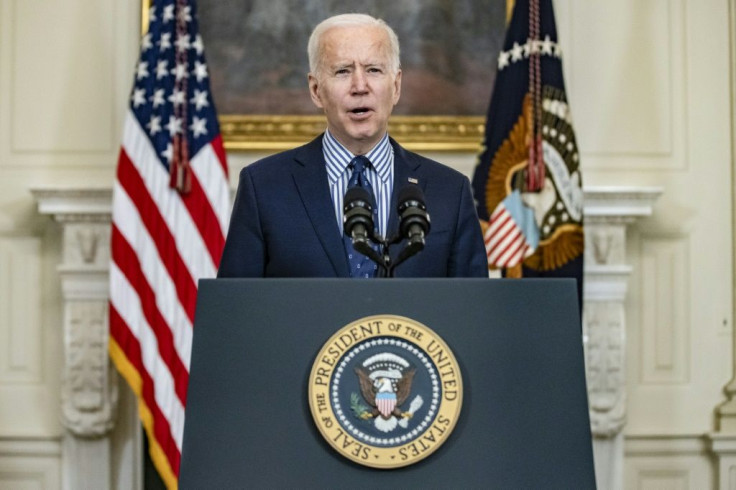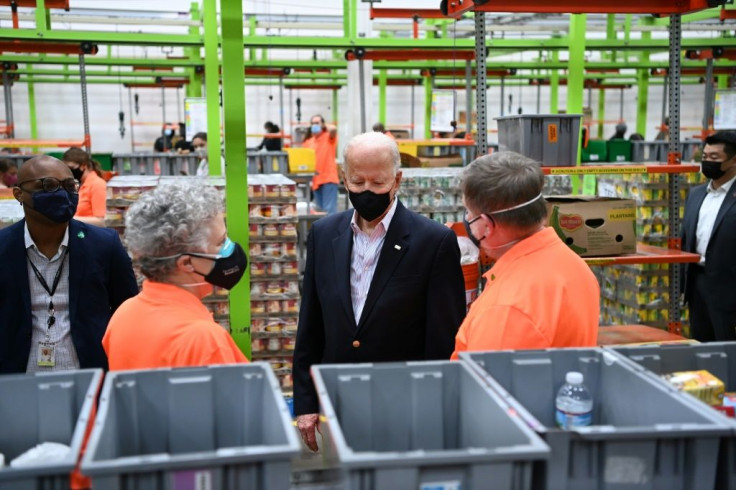Biden Plan A 'Powerful Change' For Poor US Children
With the massive $1.9 trillion US stimulus plan approved by Congress on Wednesday, President Joe Biden is marking a dramatic shift in US social policy, with the goal of cutting child poverty in half.
"The American Rescue Plan represents a powerful change in social policy in the United States," said Olivia Golden, executive director of the Center for Law and Social Policy.
After the economy sustained deep damage from the Covid-19 pandemic, the rescue package aims to boost US growth this year, with some economists predicting an expansion of as much as seven percent.
The economic pain caused by the pandemic has shed a harsh light on inequalities in the United States, where the social safety net is inadequate for most families, and where many, especially in lower income Black and Hispanic communities, are unable to build a financial cushion.
In total, $400 billion in the package will support consumer spending by sending stimulus checks directly to Americans.
But the package also includes a myriad of "critical steps toward meeting the real needs of children, young people, families, and workers," Golden said.

The coronavirus recession that struck in the spring of 2020 -- the worst since World War II -- has thrown millions of people into poverty, which Biden denounced repeatedly both on the campaign trail and after he took office in January.
"We cannot, will not let people go hungry. We cannot let people be evicted because of nothing they did themselves," he said in January, predicting his plan would lift five million children out of poverty.
The most prominent feature of Biden's American Rescue Plan are its stimulus checks of up to $1,400 per-person, and its expanded unemployment insurance. But poverty experts say its expansion of the Child Tax Credit may prove even more significant.
The bill reforms the credit to be more generous, and also changes which families are eligible.

The changes would make the full Child Tax Credit available to all children except those with the highest incomes, according to the Center on Budget and Policy Priorities, an independent research institute.
The law now provides a $3,600 for each child up to 5 years old and up to $3,000 for children 6 to 17 years old, compared to $2,000 previously. The credit would be phased out for couples earning $150,000 per-year.
"We find that if the plan were fully implemented this year, it may cut child poverty by more than 50 percent," said Zachary Parolin, professor at Columbia University's Center on Poverty and Social Policy.
The institute also conducted a study to calculate the financial impact, and found "the $100 billion dollar investment would likely yield about $800 billion in returns through improvements in children's and parents' health (and) earnings," said Chris Wimer, one of the researchers.
But for these effects to last, these measures must still be made permanent -- a change that Parolin said would be "historic."
Golden said the next task in improving US social policies is to "add crucial missing pieces, such as paid family leave," which the country currently lacks a federal law guaranteeing.
American University professor Bradley Hardy said the government must see these steps as an investment in the future.
"There is substantial social sciences evidence that access to economic resources during childhood can boost a range of longer term socioeconomic outcomes," he said.
He pointed to the experience of policies implemented in Britain under former prime minister Tony Blair.
More than two decades ago, Blair announced an ambitious plan to fight child poverty in Britain at a time when a quarter of children lived in poverty.
A Columbia University and London School of Economics study found that the campaign, which relied on combination of tax credits, income support and government programs, cut the child poverty rate by more than half over a decade.





















